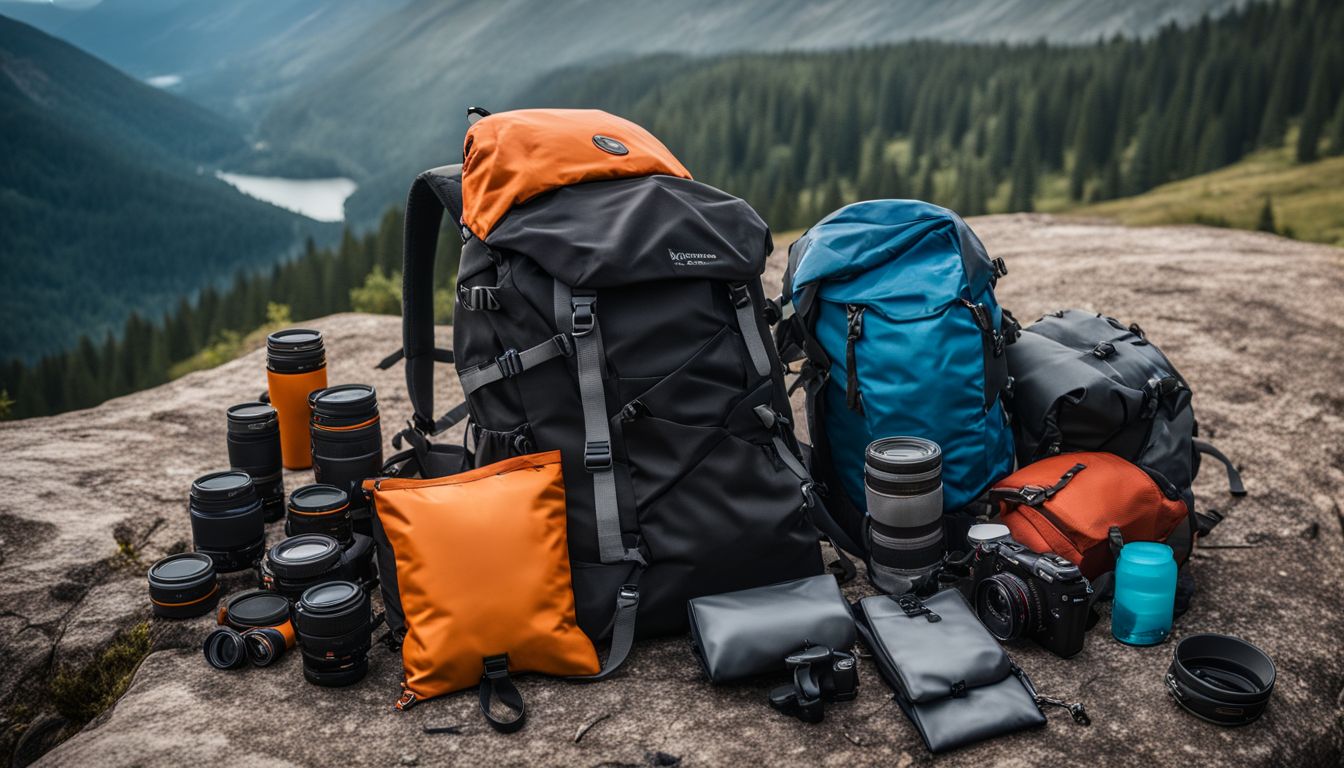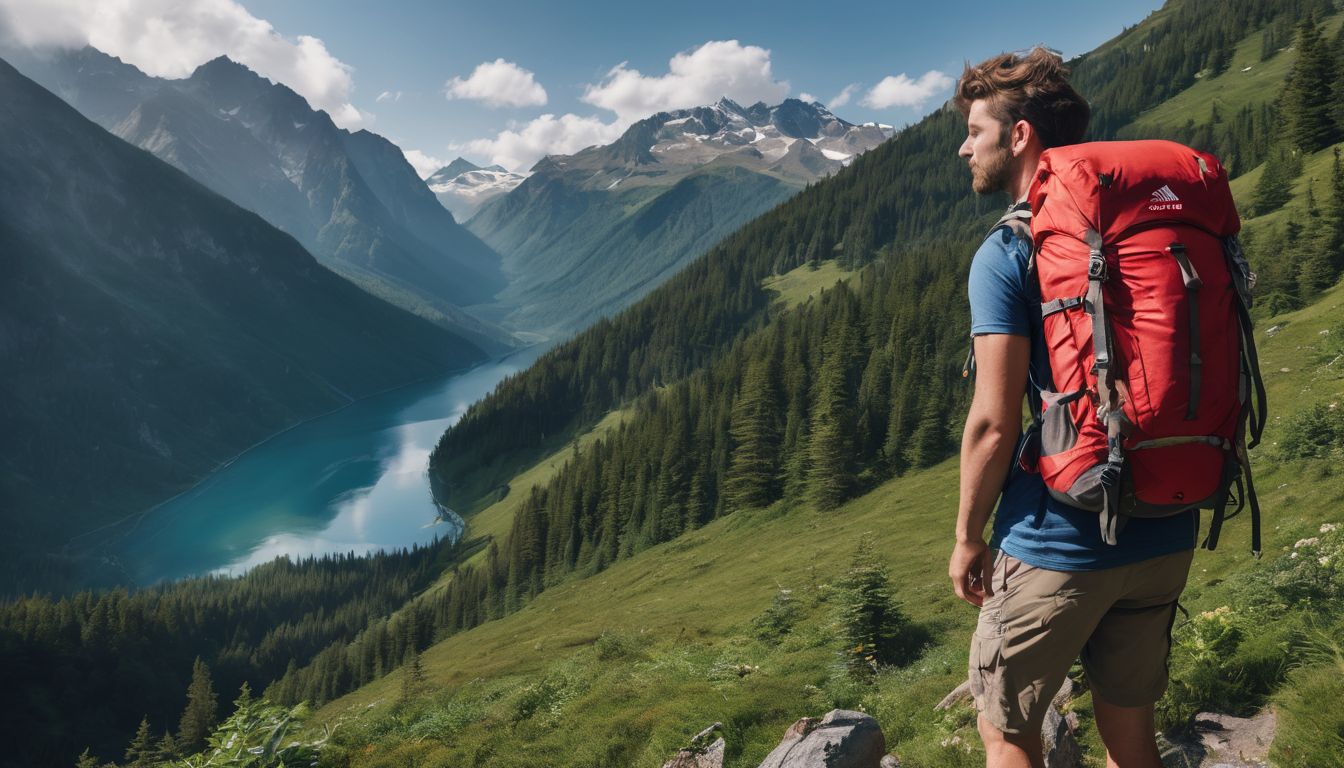Efficient rucksack packing is not just about fitting everything you need into one bag; it’s an art that enhances comfort and mobility on your adventures. With years of trekking experience beneath my belt, I’ve turned packing into a science – ensuring every item has its place while maintaining an even weight distribution to keep those dreaded blisters at bay.
A properly packed ruck can make the difference between a grueling haul and a joyful journey.
Knowing where each piece of gear should nestle in your pack is key, from sleeping bags tucked snugly at the bottom to the rain jacket ready at a moment’s notice. This article will share time-tested strategies and insider tips to streamline your load, making every outing more enjoyable.
Get set for transformative tactics that promise to upgrade your outdoor experiences! Keep reading – your back will thank you.
Key Takeaways
- Choose a rucksack based on the trip’s needs, considering size, features, and durability for comfort and convenience.
- Organize gear in your rucksack by placing heavy items at the bottom, denser items in the core, frequently used items at the top, and smaller tools in accessible pockets.
- Distribute weight evenly to optimize comfort and mobility while using packing techniques like rolling clothes and utilizing packing cubes or compression bags to maximize space efficiency.
- Efficient rucksack packing involves careful organization and weight distribution for a comfortable travel experience.
Choosing the Right Rucksack for Your Trip

Ensure your rucksack meets the specific needs of your trip, considering factors such as size, features, and durability. The right rucksack can make a world of difference in comfort and convenience during your travels.
Considerations for size, features, and durability
Picking the right rucksack is a big deal for travelers. You want one that fits well and lasts long.
- Size matters: Think about how much you need to carry. A small daypack is fine for short hikes, but overnight trips need something bigger.
- Fit is key: Try on backpacks with some weight in them to see how they feel on your back. Look for a snug fit with a waist belt to help share the load.
- Pay attention to pockets: Pockets keep you organized. Make sure your pack has enough places to put things where you can easily reach them.
- Durability makes a difference: Look for tough materials that can handle being tossed around. Strong zippers and reinforced seams are good signs.
- Comfort counts: Padded straps and backs make carrying heavy items less painful. Pick a pack that feels good on your body.
- Check the closures: Buckles and compression straps should be easy to use and strong enough to hold your gear tight.
- Weather protection: Consider packs with waterproof covers or materials if you’ll be trekking in the rain or snow.
Organizing Your Gear

When packing your rucksack, it’s essential to organize your gear efficiently to ensure easy access and weight distribution. Learn how to pack each section of your backpack for maximum convenience and comfort.
Read on for more tips on streamlining your packing approach.
Bottom-of-Pack Items: Heavy gear and sleeping equipment
Packing the bottom of your rucksack is all about balance and comfort. You want to start with heavy gear and sleeping equipment for a solid foundation.
- Place your sleeping bag first: Most backpacks have a big area at the bottom with its own zipper. Use this space for your sleeping bag because it’s bulky but not too heavy.
- Add other heavy items above the sleeping bag: Things like cooking gear or food that you won’t need until camp should go here. Keep them in the middle close to your back.
- Think about packing items flat: Lay things as flat as possible to avoid lumps that could poke you in the back. This helps keep your pack stable and comfy.
Core-of-Pack Items: Clothing and bulkier items
After putting the heavy gear and sleeping equipment in the bottom, let’s move to the core. This area is for denser, heavier items that backpackers won’t need right away.
- Place clothes next. They provide cushioning for harder items.
- Roll or fold shirts, pants, and jackets to save space. Rolling can reduce wrinkles.
- Use packing cubes or compression bags. These help organize things and squish air out so everything fits better.
- Pack your heaviest pieces close to your back. It helps with balance.
- Stack bulkier items like fleece or sweaters around the heavy stuff. Think of it like padding.
Top-of-Pack Items: Frequently needed items and snacks
Ensure that frequently needed items and snacks are easily accessible during your trek. Here’s how to pack the top section of your rucksack for maximum convenience:
- Utilize the top lid pocket for quick access to small essentials such as sunscreen, insect repellent, and a headlamp or flashlight.
- Keep hydration within easy reach by stashing a water bottle in the side pockets or using a hydration reservoir with a tube for convenient sipping while on the move.
- Pack energy – boosting snacks like nuts, dried fruits, or energy bars in a readily accessible pocket for quick refueling during the journey.
- Consider having a lightweight rain cover or poncho easily accessible in case of unexpected weather changes.
- Store a map, compass, or GPS device at the top for easy navigation without having to dig through your pack.
- Carry a lightweight first aid kit in a designated pocket at the top of your rucksack to address any minor injuries quickly.
Accessory Pockets: Small tools and personal items
Small tools and personal items should be easily accessible during your hike. Here are some effective ways to organize them within your rucksack:
- Utilize Hip Belt Pockets: Keep small, regularly used items like a multi-tool, compass, or sunscreen in the convenient hip belt pockets for quick access without needing to take off your pack.
- Consider Lid Pockets: These are ideal for storing smaller essentials such as headlamps, snacks, a map, or a small first-aid kit. Keeping these items in the lid pocket ensures they are easily reachable when needed on the trail.
- Use Side Mesh Pockets: Arrange water bottles, energy bars, or trekking poles in side mesh pockets for easy retrieval without having to open your main compartment.
- Employ Front Stash Pocket: Larger-sized accessories like a rain jacket or an extra layer can be stored in the front stash pocket for quick retrieval even while on the move.
- Take Advantage of Gear Loops and Attachment Points: Items such as a carabiner, sunglasses case, or wet clothing can be securely fastened using gear loops and attachment points on the outside of the pack for convenient access and added organization.
Mastering Weight Distribution for Comfort and Mobility
Positioning heavier items closer to your back optimizes weight distribution for comfort and mobility. Placing these items towards the center of the backpack is ideal for climbing uphill, as it uses less energy and increases stability.
Engaging pocket placement ensures even weight distribution, promoting maximum comfort during hikes.
Achieving optimal comfort and safety on treks involves expert advice on what to pack and how to distribute backpack weight. Distributing weight in a specific manner can lead to better comfort, convenience, and stability when packing a backpack.
Using common sense when packing is important for successful weight distribution in hiking.
Remember that distributing the weight of items evenly between bottom-of-pack, core-of-pack, top-of-pack, and accessory pockets helps maximize comfort while carrying the rucksack.
Packing Techniques for Space Efficiency
Master the art of rolling vs. folding clothing and utilizing packing cubes and compression bags to maximize space in your rucksack. Learn these techniques to pack smarter, not harder!
Rolling vs. Folding clothing
Rolling clothes is an effective space-saving technique, allowing for more efficient packing.
- Rolling clothing items reduces creases and takes up less surface area in the backpack, enabling more items to be packed.
- It’s especially beneficial for casual wear and outdoor clothing as it helps to save space.
- However, formal wear like gowns or suits are better folded or packed in a garment bag to maintain their pristine condition during travel.
- When clothes are rolled, they take up only around a quarter of the space compared to when they are folded traditionally.
- Consider using compression bags for folded clothes, as they provide better compression than rolling, minimizing wasted space between garments.
- The ongoing debate between rolling and folding considers factors such as wrinkle – reduction and space efficiency.
Utilizing packing cubes and compression bags
After mastering the art of rolling vs. folding clothing, understanding how to utilize packing cubes and compression bags can take your packing game to the next level. These handy tools offer several benefits for efficient rucksack packing strategies:
- Organized Packing: Packing cubes enable you to compartmentalize different types of clothing and gear, keeping everything neatly organized within your rucksack.
- Efficient Use of Space: Compression bags allow you to minimize the volume occupied by clothing and other soft items by squeezing out excess air, making more room in your backpack.
- Easy Access: Using packing cubes helps you locate specific items without having to dig through your entire bag, saving time and frustration during your travels.
- Simplified Transfers: When needing to switch items between different bags or compartments, packing cubes make it a straightforward process without any hassle or missing essential pieces.
- Protection and Segregation: Both compression bags and packing cubes add a layer of protection for your clothes while also separating clean garments from dirty ones during longer trips.
- Enhanced Organization: Utilizing these tools aids in categorizing your belongings according to type or use, allowing for easier access when needed throughout your journey.
Conclusion: Streamlining Your Packing Approach
In conclusion, efficient rucksack packing involves careful organization and weight distribution. By packing heavy gear at the bottom and frequently needed items on top, you ensure comfort and easy access.
Rolling clothes saves space and reduces wrinkles, while choosing the right backpack is crucial for a successful trip. These practical strategies can greatly impact your travel experience, providing convenience and reducing physical stress.
Take charge of your next adventure with these efficient rucksack packing tips!
FAQs
1. What is a bergen and why is it important for packing?
A bergen is a type of rucksack or backpack that’s tough and big. It’s good for carrying all you need on long outdoor adventures like thru-hikes.
2. How do you pack a rucksack efficiently for a thru-hike?
To pack efficiently, put heavy things in the middle close to your back, keep often-used items on top or in outside pockets, and make sure everything fits snug so it doesn’t move around.
3. Can packing strategies really make a difference on long hikes?
Yes! Good packing can help balance the weight in your rucksack, making it easier to carry which means you can hike longer without getting tired.
4. What should I not forget when packing my bergen for a hike?
Don’t forget water, food, clothes for weather changes and something to sleep in if needed; also plan where each thing goes in your bergen so nothing gets lost.

